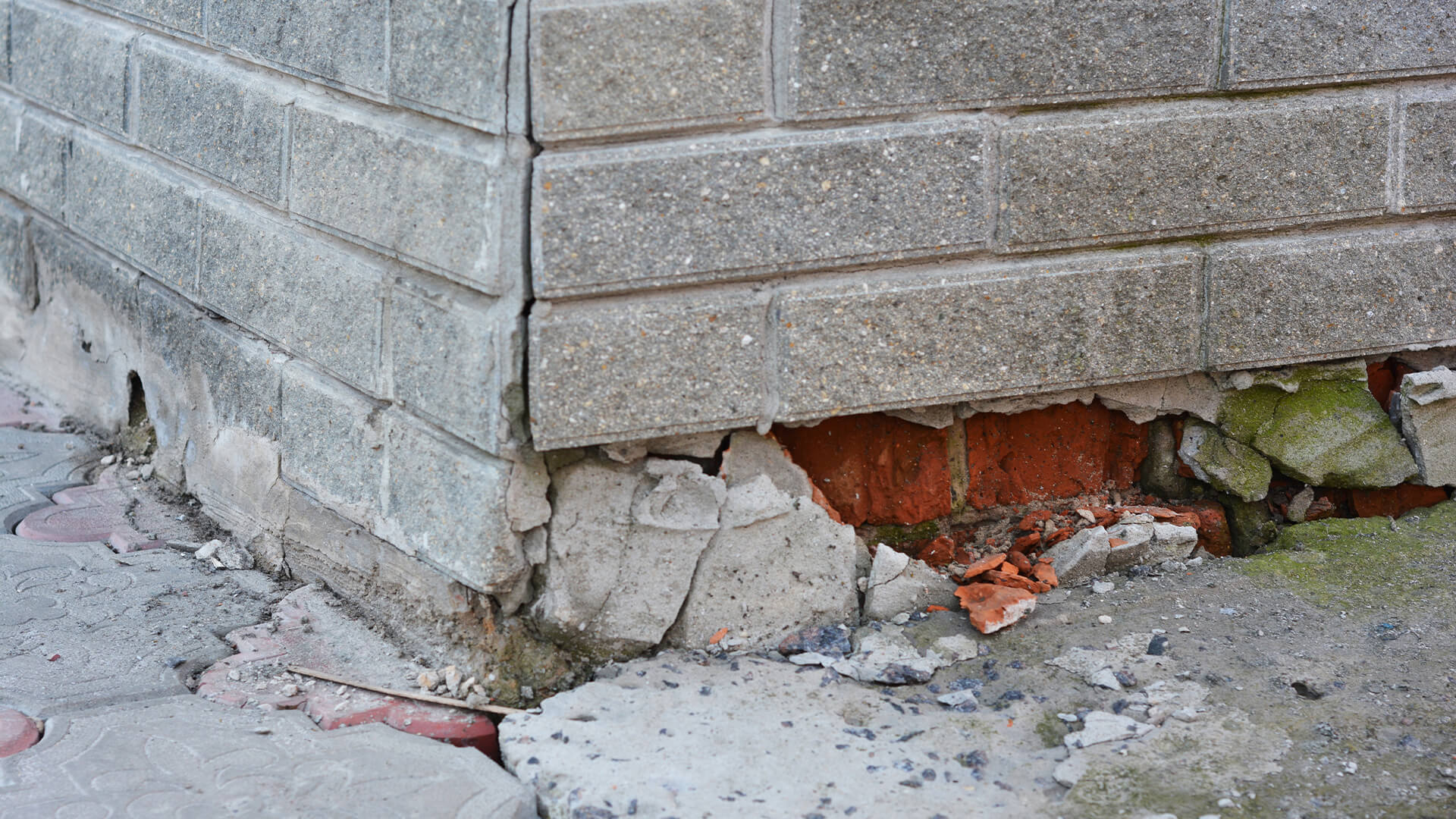A property foundation is fundamental in keeping the structure stable. Cracks or holes can lead to costly repairs. It can cost an average of $4,638 to make these fixes. Here are some things contractors should look for when examining a home’s exterior.
1. Cracks in the Interior Walls
Diagonal cracks in the drywall are signs that the foundation needs repair. These are usually seen on doors or window frames. They occur because settling has pulled down or pushed up a portion of the wall. The best way to repair the gap is to re-tape the joint.
For this process, follow these steps:
- Remove any loose tape or broken pieces of drywall mud.
- Sand the surface.
- Fill the gap with the drywall compound and put on the new tape.
Make sure to apply multiple thin coats of the compound and sand after each one. Consider using a taping compound that works better for covering plaster cracks. It also dries harder, creating stronger bonding.
2. Cracks in the Bricks
Holes in the brick mortar that look like stair-step patterns may also be a concern. These are found on exterior walls. The exact location may vary, but most appear near window openings. The problem is the bricks have settled down, creating gaps along a stair-step path.
The unstable foundation can be due to moisture issues or excess pressure. For example, a home’s drainage system may not be functioning properly. If not repaired, these cracks can grow bigger. Larger cracks leave the property vulnerable to the elements. Plus, it can lead to ongoing nuisances for residents — rodents can enter through foundation cracks and damage the interior.
To repair the cracks, contractors will need to patch them with new mortar. It’s also essential to find a mortar dye color that closely matches the hue of the wall.
3. Doors That Stick
If a door is not opening properly, then there may be a foundational issue. The problem is most noticeable around the top or bottom edges of the door. The sticking is caused by a shifting movement that pulls the door frame out of place. During an emergency, a stuck door is a safety concern for homeowners needing to evacuate quickly.
To address these issues, builders have a few options, such as:
- Tightening the hinge screws
- Drawing in the jamb
- Planing the door with a belt sander
4. Gapping or Separated Exterior Trim
Once the exterior trim becomes detached from the structure, there is a problem. When the brick or outer wall moves, the boards lose hold of their original placement and come off the wall.
There are multiple reasons for this movement. If a foundation doesn’t receive enough water, it can dry up, causing bricks to drop. If trees surround the property, the roots can suck up some of the moisture.
Also, cracks can be caused by thermal expansion. This is where the bricks expand in the summer and contract in the winter. Use caulk to fill in the gaps between the trim and exterior.
5. Out of Place Cabinetry
Foundation issues can cause cabinets to pull from the walls. The kitchen or bathroom are common places for this to occur. The shifting is caused by a settling foundation. The settling moves walls and pushes cupboards out of their secure position. If the issue isn’t addressed, the shelving may fall, potentially injuring homeowners.
To repair them, inject glue into any loose joints or separations. Contractors also want to use wooden cabinet screws that are at least 3’’ long for plaster walls. Anything shorter than that could make it harder to reach the stud.
6. Separation of the Counter and Backsplash
If the backsplash and countertop are coming apart, this requires immediate attention. Contractors should examine the kitchen and bathroom tile lines for signs of cracks. When the walls shift, they create gaps between the tilework and countertops. These holes can make it easier for homeowners to drop food in the holes and attract pests.
Contactors can close the gap using caulk or by covering it with trim. For smaller holes, acrylic latex or silicone caulk is best. Before starting the process, lay down painter’s tape along the edge of the countertop and wall.
If the gap is larger than 3/8″, it’s usually better to use trim. Quarter-round and cove molding are popular material choices. Make sure to prime or seal the molding before installation. Then use construction adhesive to glue the molding to the countertop.
7. Cracked or Sagging Floors
Concrete flooring can form cracks due to initial hardening or environmental changes. However, larger cracks can indicate a shift in the foundation. Before starting the repair, clean the spot to remove any grease or dirt. Then apply bonding adhesive and fill the hole with a sand mixture. Be sure to give the patch time to dry.
On the other hand, a weak structural support or settlement weight can lead to sagging floors. Placing a concrete footing can help hold up the joists. Adding support beams with columns remaining in place will also uplift the structure.
Signs It’s Time to Evaluate a Property’s Foundation
Having a solid foundation ensures a property is protected against the elements. However, over time, a building structure can shift, creating cracks. If homeowners, property owners, or construction professionals notice any of these signs, it’s time to repair the foundation.
By Evelyn Long, Editor-in-Chief of Renovated.






























